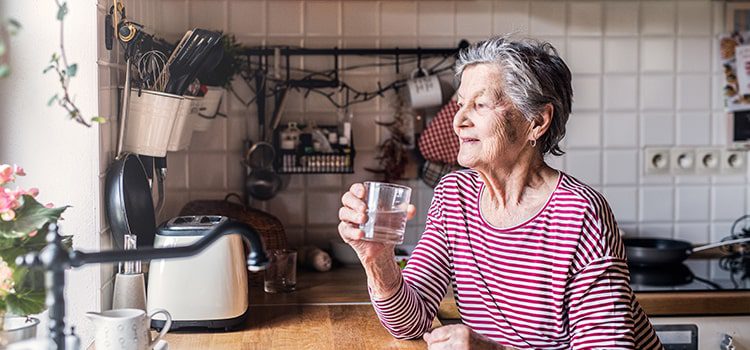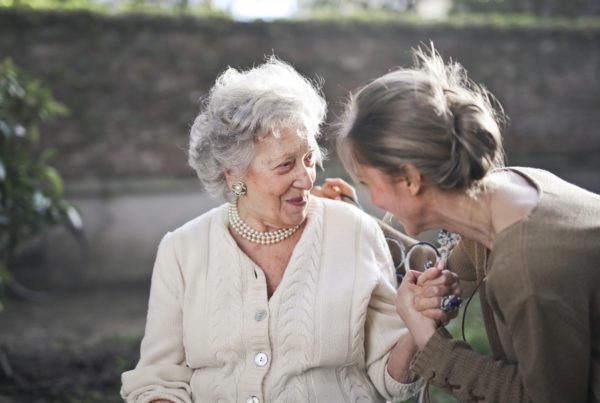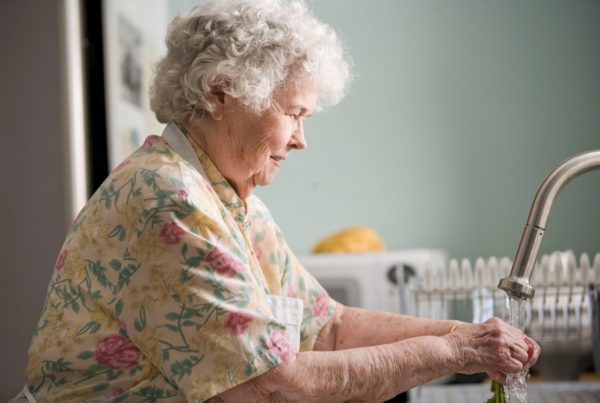Things to consider if you are adapting your home when living with dementia
Dementia affects people differently, however there are similarities in how the condition affects the brain with cognitive and communication functions. Someone who is living with dementia may start to find that navigating their own home becomes difficult. You may need to start thinking about adapting your home when living with dementia.
If you are the main carer for someone with dementia, then you will also find these adaptions enable more independence for the person which increases their sense of well-being.
Adapting your home to be more dementia friendly means that your home remains a safe and comfortable place for them.
As dementia progresses, there may be new things that you have to adapt to keep the home dementia friendly for your loved one. The key is to go with the flow – you may not need to make all of the adaptions here, see what happens and adapt as you go.
Lighting and flooring
Lighting and flooring can make a huge difference to the person with dementia. By observing the person and how they are reacting in their environment, you will be able notice things that may need changing.
There should be as much natural light as possible in the home during the day to keep a sense of what time of the day it is. Be aware of any shadows that could cause distress. Also, keep an eye on behaviour with lighting, sometimes a light may be too bright, or too dim – you may wish to install dimmer switches so that you can be flexible with lighting. At bedtime, ensure there is no light pollution in the bedroom so that the sense of night time is retained.
Flooring should ideally be clear of rugs as these can cause falls. Flooring colours should be neutral and not shiny where possible and contrast from the walls. Sometimes the person may experience changes in perception and a floor pattern or texture may cause distress.
Furniture
Dementia can cause perception issues which makes it difficult to determine differences in colours. This in mind, furniture should be bright and contrasting from the walls and floor. Think about things like light switches too, these can be hard to find if they are not contrasting to the wall.
Meal time adaptions
Meal times can present challenges for someone with dementia, patterned plates can cause distress as they may find it difficult to distinguish between the pattern and the food. Also, if there is white food on a white plate, the person may struggle recognising the food. The person may also struggle to recognise water if it is served in a glass, you may need to use something that contrasts from the water.
Signs on cupboards
The kitchen can become confusing and frustrating if the person is not able to remember what is in the cupboards and drawers. Adding signs will help enormously. The sign should have both the word and an image or symbol to indicate what is in there.
Signs on doors
People with dementia can often get confused around the home, forgetting where rooms are, and sometimes what they are for. This can be frustrating when looking for the bathroom to use the toilet, and may lead to embarrassment. To enable the person to recognise each room, you can simply make a sign to stick on it.
Use words and images, so the kitchen will perhaps have images of a plate with cutlery, and a kettle – things to enable the person to quickly recognise what the room is for.
Other tips
- Keeping things in the same places will help the person with dementia, especially in places like the kitchen.
- Think about perhaps installing handrails in bathrooms and on the stairs.
- Lock away anything that could pose as a potential danger – sharp objects, toxic cleaning products etc.
- If the person is still cooking for themselves, you can get timer switch for the cooker, and for gas it is best to get a gas alarm.
- Put a whiteboard up somewhere in the home such as the kitchen so that you can write reminders and lists on them. Sometimes it can help the person if you write each day, what the day of the week is, the date and the year.




